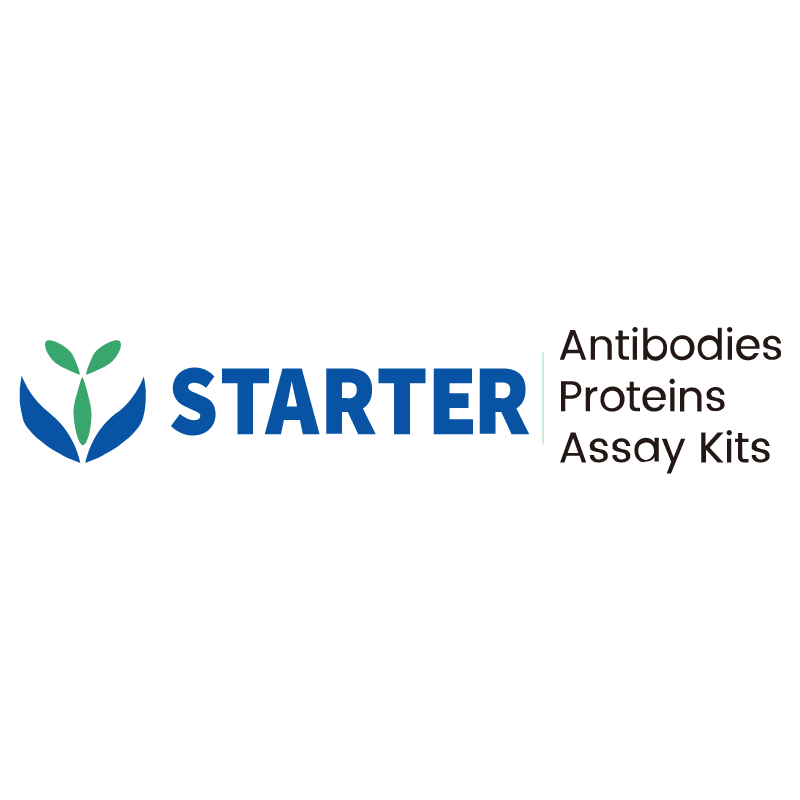WB result of TGFBR2 Recombinant Rabbit mAb
Primary antibody: TGFBR2 Recombinant Rabbit mAb at 1/1000 dilution
Lane 1: HepG2 whole cell lysate 20 µg
Secondary antibody: Goat Anti-rabbit IgG, (H+L), HRP conjugated at 1/10000 dilution
Predicted MW: 65 kDa
Observed MW: 85-90 kDa
Product Details
Product Details
Product Specification
| Host | Rabbit |
| Antigen | TGFBR2 |
| Synonyms | TGF-beta receptor type-2; TGFR-2; TGF-beta type II receptor; Transforming growth factor-beta receptor type II (TGF-beta receptor type II; TbetaR-II) |
| Immunogen | Synthetic Peptide |
| Location | Cell membrane, Secreted |
| Accession | P37173 |
| Clone Number | S-1711-55 |
| Antibody Type | Recombinant mAb |
| Isotype | IgG |
| Application | WB, IHC-P |
| Reactivity | Hu, Ms |
| Positive Sample | NIH/3T3 |
| Purification | Protein A |
| Concentration | 0.5 mg/ml |
| Conjugation | Unconjugated |
| Physical Appearance | Liquid |
| Storage Buffer | PBS, 40% Glycerol, 0.05% BSA, 0.03% Proclin 300 |
| Stability & Storage | 12 months from date of receipt / reconstitution, -20 °C as supplied |
Dilution
| application | dilution | species |
| WB | 1:1000 | Hu, Ms |
| IHC-P | 1:250 | Hu |
Background
TGFBR2, also known as transforming growth factor-beta receptor type 2, is a transmembrane protein that plays a crucial role in cellular signaling. It contains a protein kinase domain and forms a heterodimeric complex with TGF-beta receptor type-1, binding to TGF-beta ligands to initiate signal transduction. This receptor complex phosphorylates proteins, which then enter the nucleus and regulate the transcription of genes involved in cell proliferation, differentiation, apoptosis, wound healing, and immunosuppression. TGFBR2 is essential for maintaining cellular homeostasis and preventing uncontrolled cell growth, thus acting as a tumor suppressor. Mutations in the TGFBR2 gene are associated with various disorders, including Marfan Syndrome, Loeys-Deitz Aortic Aneurysm Syndrome, and familial thoracic aortic aneurysm and dissection. Additionally, aberrations in TGFBR2 signaling are implicated in the development of multiple types of tumors.
Picture
Picture
Western Blot
WB result of TGFBR2 Recombinant Rabbit mAb
Primary antibody: TGFBR2 Recombinant Rabbit mAb at 1/1000 dilution
Lane 1: Neuro-2a whole cell lysate 20 µg
Lane 2: NIH/3T3 whole cell lysate 20 µg
Negative control: Neuro-2a whole cell lysate
Secondary antibody: Goat Anti-rabbit IgG, (H+L), HRP conjugated at 1/10000 dilution
Predicted MW: 65 kDa
Observed MW: 60-90 kDa
Immunohistochemistry
IHC shows positive staining in paraffin-embedded human liver. Anti-TGFBR2 antibody was used at 1/250 dilution, followed by a HRP Polymer for Mouse & Rabbit IgG (ready to use). Counterstained with hematoxylin. Heat mediated antigen retrieval with Tris/EDTA buffer pH9.0 was performed before commencing with IHC staining protocol.
IHC shows positive staining in paraffin-embedded human placenta. Anti-TGFBR2 antibody was used at 1/250 dilution, followed by a HRP Polymer for Mouse & Rabbit IgG (ready to use). Counterstained with hematoxylin. Heat mediated antigen retrieval with Tris/EDTA buffer pH9.0 was performed before commencing with IHC staining protocol.
IHC shows positive staining in paraffin-embedded human hepatocellular carcinoma. Anti-TGFBR2 antibody was used at 1/250 dilution, followed by a HRP Polymer for Mouse & Rabbit IgG (ready to use). Counterstained with hematoxylin. Heat mediated antigen retrieval with Tris/EDTA buffer pH9.0 was performed before commencing with IHC staining protocol.


